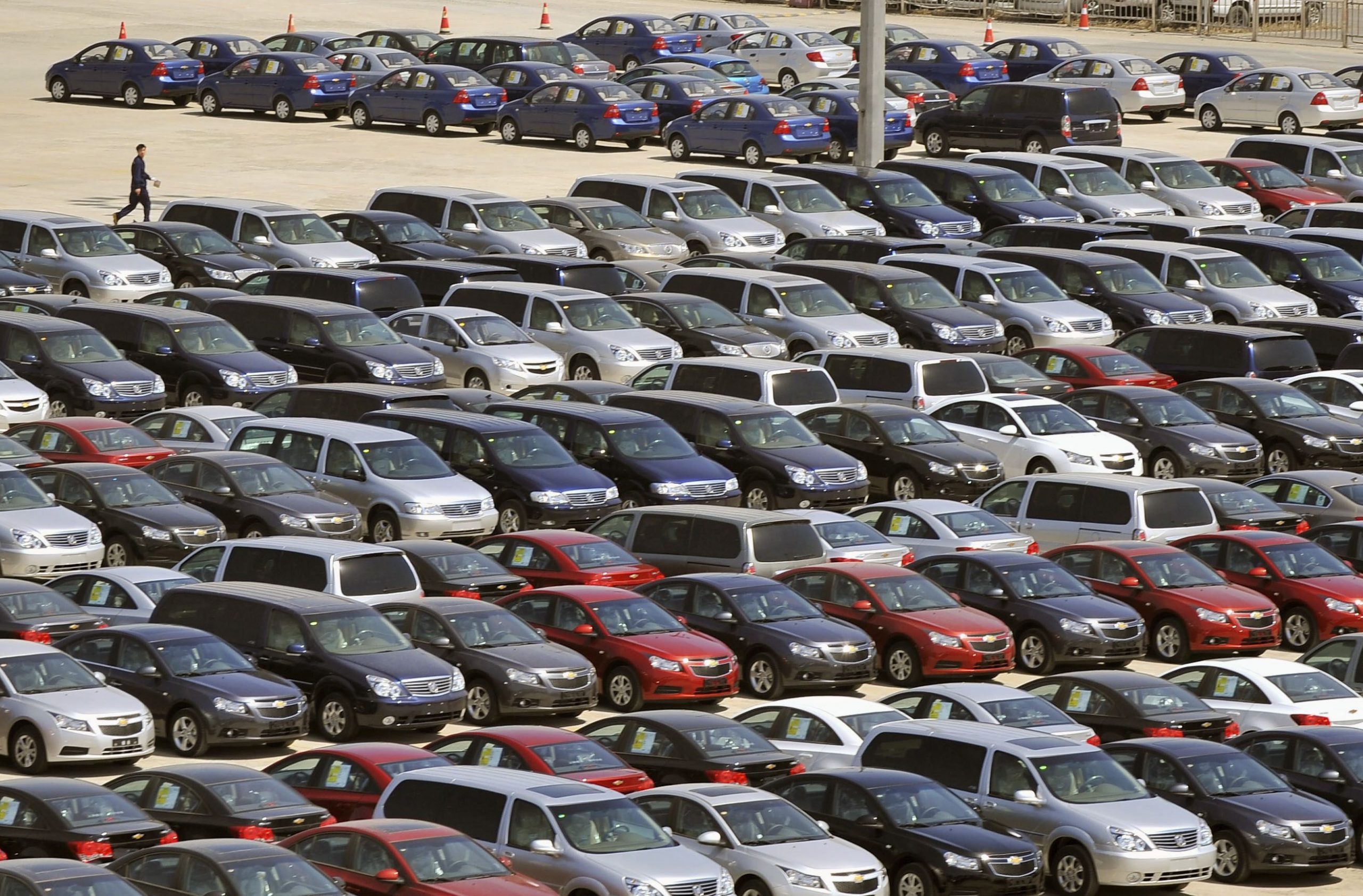The automotive industry is a critical component of economic growth. The Indian auto industry is one of the largest in the world with an annual production of 23.37 million vehicles in FY 2014-15. The automobile industry accounts for 22 per cent of the country’s manufacturing gross domestic product (GDP). The industry directly employs more than 10 million people engaged in designing, engineering, manufacturing, and supplying parts and components to assembly, sale and service new motor vehicles. In addition, the industry is a huge consumer of goods and services from many other sectors, including raw materials, Construction, machinery, legal, financial and advertising.
India, in global auto sector, has made its presence felt in the recent years with its potential. India offers scope for the manufacture of low cost vehicles with its highly skilled but inexpensive manufacturing base, labour intensive components in the developing economy.
Various Segments of Automobile Industry
KEY HIGHLIGHTS
- Projected CAGR for auto OEM sector is 7%, while that of Auto component industry is 18%.
- 100% FDI under automatic route, allowing free imports of automotive components and de-licensing in the automotive sector has helped in developing the sector.
- By 2020, India’s share in the global passenger vehicle market to double to 8 per cent from 4 per cent over 2010–11.
- Subdued oil prices, decrease in interest rate and Modi government initiative like ‘Make in India’, 100 smart cities are likely to give a boost to the automobile sector.
- Over the years, due to many factors like geographical proximity to key automotive markets, a large pool of skilled and semi-skilled workforce, large production of steel have made India a preferred destination for Automobile Industry in the globe.
CHALLENGES
- The automobile sector is hugely capital intensive. Large capital is to be invested in developing a new product with long gestation period. Brand promotion expenditure, large distribution network, and greater product innovation are the add-ons.
- The competitive rivalry has increased post liberalisation to a great extent. Almost all the international big brands have entered India. Because of availability of various options, competition being the major, Auto sector works on very thin margins.
- Over the years Indian auto industry has moved away from urban focus to rural bias,. But thanks to continued rural weakness, high inflation, unseasonal rains & poor monsoon forecasts automobile sector is under pressure.
- The auto ancillary sector is facing tough competition from the Chinese market. China is much cheaper than India in terms of raw material hence many OEM prefers raw material from China.
DESTINATION INDIA
Where does India Stand
- Largest Tractor Manufacturer
- 2nd Largest two wheeler manufacturing hub
- 2nd largest Bus manufacturer
- 6th largest car manufacturer
- 7thlargest commercial vehicle manufacturer
- 4th largest Steel producing country
Vehicles per capita
In India, motor vehicle penetration is very low as compared to other developing countries. At present, there is roughly around 47 vehicles per 1000 people.
Following is the list of few developing countries by the number of road vehicles per 1000 inhabitants. The present list excludes motorcycles and other two-wheelers.
| Country | Motor Vehicles
per 1000 people |
| San Marico | 1,263 |
| United States | 809 |
| Japan | 588 |
| Brazil | 249 |
| South Africa | 165 |
| China | 113 |
| Indonesia | 69 |
Source:- Wikipedia
The above data relates to CY 2011 & 2012. At that time penetration in India was around 18 vehicles per 1000 people.
Automotive clusters in India
Automotive industry has a significant presence on all the four sides of India. Delhi- Gurgaon- Faridabad in the north, Mumbai-Pune- Aurangabad- Nasik in the west, Chennai- Bengaluru- Hosur in the south and Jamshedpur- Kolkata in the east are the four major auto clusters in India. One more auto cluster is developing in the west region Sanand, Gujarat. This auto cluster will pave the way for making western region the most competitive destination for automobile industry in India. Suzuki, Ford and Tata Motors are some automobile players which are starting their plant in Sanand.
TURNOVER
Automobile Manufacturer
Units in Lakh
Area wise export
Design and Research Centres of leading global companies in India
Favorable government policies and availability of adequate resources leading India to emerge as R&D house for world leading auto companies. To give strong support to R&D, government has established National Automotive Testing and R&D Infrastructure Project (NATRiP) centers. AMD, Boeing, Bosch, Ford, GM, Honda, Honeywell, Hyundai, Mercedes Benz, Suzuki, Valeo, Nissan have their research centers in India.
Electric Vehicle
Increasing environmental awareness is leading auto companies to think on manufacturing less polluting vehicle. Next generation will be of Electric vehicle. Government has established “The national mission for electric mobility 2020”. The objective of this body is to encourage reliable, affordable and efficient xEVs (hybrid and electric vehicles) that meet consumer performance and price expectations through government-industry collaboration, for the promotion and development of indigenous manufacturing capabilities, required infrastructure, consumer awareness and technology – thereby helping India emerge as a leader in the two-wheeler and four-wheeler xEV market in the world by 2020, with total xEV sales of 6-7 Million units thus enabling the Indian automotive industry to achieve global xEV manufacturing leadership and contributing towards national fuel security.
The uptake of electric vehicles will depend in large part on the adequate deployment of Electric Vehicle Supply Equipment (EVSE) needed to recharge electric vehicles.
Gaining Momentum in Luxury car
India has the world’s 12th-largest HNI population, with a growth of 20.8 per cent (highest among the top 12 countries). With increasing wealth and spending power and desire for luxurious life more consumers aspire to own luxury cars. Affluent class of the country is driving the demand of the luxury cars. The Indian luxury car market expanded at a CAGR of 30 per cent. Indian luxury car market is dominated by players like Mercedes Benz, BMW, Audi, Jaguar and Volvo,
Easy financing
Today customers have greater availability of credit as a financing option. Many of the car makers have started providing customised financing to customers through various credit channels. Corporate houses too are buying cars in large number because of operating lease option.
Crude oil prices
After touching the prices below USD 50 per barrel from USD 110 per barrel, the prices have been stabilised between USD 55 – 60 per barrel. Decrease in oil prices is driving demand high for automobiles.
Infrastructure Development
New government is very much keen on infrastructure development. Overall condition of roads is improving, Number of expressways & National highways are proposed by the ministry. A major thrust on infrastructure spending and road development augurs well for automobile industry. Start of infrastructure development activity and opening up of the mining sector has help speed up the growth of M&HCVs.
INVESTMENT
To match production with demand, many automakers have started to invest heavily in various segments in the industry in the last few months. The industry has attracted foreign direct investment (FDI) worth US$ 12,232.06 million during the period April 2000 to February 2015, according to the data released by Department of Industrial Policy and Promotion (DIPP).
Some of the major investments and developments in the automobile sector in India are as follows:
| Nissan | To invest INR 5000 crore in expanding capacity in Chennai plant. |
| Ford | Bought 130 acres land in Sanand, Gujarat for R&D. |
| Suzuki | To invest INR 8500 crore in Sanand, Gujarat through its wholly owned subsidiary Suzuki Gujrat |
| M&M | To invest INR 4000 crore for new plant in Chennai |
| Isuzu | To invest INR 3000 crore in starting new facility at Sri City. |
| Fiat | To invest INR 2000 crore in manufacturing Jeep and subsequent export of the same. |
| Volkswagen | To invest INR 1500 crore in expanding its capacity |
| BMW | Plans to raise a number of car offering and expanding its dealer network. |
| GM | Plans to launch up to eight models in next 5 years. |
| Honda | To invest INR 1380 crore in set up a new plant at Gujrat and expand its capacity in Rajasthan Plant. |
| Hyundai | Plans to invest USD 750 million over next two to five years to develop new products |
| DSK Hyosung | To set up plant in Maharashtra |
| Mercedes Benz | To invest INR 150 crore for capacity expansion in Chakan, Pune |
| Ashok Leyland | To invest INR 300 crore for bus manufacturing. |
Source: – IBEF Presentation, PWC
DEAL WORLD
M&A in Automobile Sector
| Particulars | 2012 | 2013 | 2014 |
| Number of deals | |||
| Domestic | 10 | 13 | 9 |
| Inbound | 16 | 14 | 13 |
| Outbound | 7 | 10 | 5 |
| Total | 33 | 37 | 27 |
| Deal Value (US$ million) | |||
| Domestic | 53 | 45 | 2 |
| Inbound | 86 | 341 | 154 |
| Outbound | 114 | 206 | 135 |
| Total | 253 | 592 | 291 |
Source: – EY Report
Top 10 M&A deals since 2011
| Year | Acquirer | Target | US$ million |
| 2011 | Hero Investment Pvt. Ltd | Hero Honda Motors Ltd from Honda | 851 |
| 2011 | M&M | Ssangyong Motors | 470 |
| 2012 | Binani Industries Ltd. | 3B-fibreglass company | 360 |
| 2013 | Amtek India Ltd. | Kuepper Group | 266 |
| 2011 | MAN Truck& Bus AG | MAN Force truck Pvt. Ltd | 228.4 |
| 2011 | Motherson Sumi | Peguform Group | 193 |
| 2013 | M&M | CIE Automotive SA | 128 |
| 2013 | Participaciones Internacionales Autometal Dos | Mahindra Forgings Ltd. | 122.6 |
| 2015 | Igarashi Electrical Works | Agile Electric Sub Assembly Pvt. Ltd | 106.4 |
| 2012 | Tube Investment of India | Shanthi Gears Ltd | 92.8 |
Source:- Grand Thornton Presentation
Joint Venture
Major OEM players choose to form JV to enable them to grow their range while taking fewer risks. Alliances are playing significantly increasing role in generating economies of scale.
Some of the Present/Past JV’s in India:-
| Name | JV Partner | |
| Maruti Suzuki | MarutiUdyog | Suzuki Motors |
| Hero Honda | Hero | Honda |
| Tata-Marcopolo | Tata Motors | Marcopolo |
| VE Commercial Vehicles | Eicher Motors | Volvo Group |
| Eicher-Polaris | Eicher Motors | Polaris Industry Inc. |
| Ashok Layland-Nissan | Ashok Layland | Nissan |
| MAN FORCE | Force Motors | MAN AG |
| Mahindra Peugeot | Mahindra Group | Peugeot Motorcycle |
| SML Isuzu | Punjab Tractor | Mazda |
| Leyland Deere | Ashok Leyland | John Deere |
CONSOLIDATION/ALLIANCE …NEED OF THE HOUR?
In auto component industry we can see a lot of joint ventures. This has helped many companies in expanding their capabilities and expanding globally. Joint Venture is the best way of facilitating cutting edge over competitors in this highly competitive era.
Over the years Samvardhana Motherson Group has forged long term partnerships and collaborations with global technology leaders, today, the Group has 25 joint venture partners. Its flagship company Motherson Sumi Systems Limited’s Market cap shot up from approx. 5.50 crore in 2001 to INR 44,000 crore in 2015. Currently, Group has presence 25 countries.
Other example is of Asahi India Glass Limited. The company is JV between Asahi group Japan, Maruti Suzuki India Limited and Labroo family. Today the company is a market leader in Indian automotive glass with over 70% market share. Its market cap grew to INR 4000 crore from INR 11 crore in 2002.
Through its 23 global partnership, Anand Group has become country’s leading OEM Supplier. Minda Industries through its joint ventures with 5-6 Japanese auto component companies has expanded from Manesar, Haryana to currently 37 manufacturing plant across a globe.
In 2009, Amtek Auto limited formed a JV with Sumitomo Metals, Japan. Since then company’s market cap grew to INR 3,666 crore from INR 1325 crore in 2009. Bharat Seats Ltd is a joint Venture of Suzuki Motor Corporation, Japan, Maruti Suzuki India Ltd and the Relan family for the manufacture of complete seating systems and interior components for the automotive and surface transport. Company’s market cap grew to INR 106 crores from INR 53 lakhs in 2002.
As of August 2014, Auto Component Manufacturers Association of India (ACMA) has over 700 companies as members, representing around 85% of the entire auto-component sector’s turnover in India. On overall basis, there are around 8000 auto component companies present in India.
The OEM market is very competitive and component manufacturers have to compromise on margins to bag bulk orders. Moreover, delivery schedules and quality standards have to be adhered to very strictly. Indian auto ancillary sector has traditionally suffered from poor quality. Margins are likely to come under pressure in the long term because as competition increases, manufacturers will find it difficult to increase prices and will try to cut costs. The burden will eventually fall on auto ancillary players. In the near future, companies will need to have manufacturing lines that can be adapted for new models, have strong technology backing, an ability to export to developed markets, market dominance in specific products and a growth plan driven by volumes and product innovations. Companies will have to focus on quality and abide by delivery schedules if they want to survive. Today, to save cost and improve efficiencies, OEM’s prefer assemblies instead of small-small components. As manufacturers sourcing components are keen to get components from fewer sources in future, this will lead to consolidation in the sector.
CONCLUSION
Many of the international tier I suppliers to OEM players have no choice but to enter India. Considering time, cost constraints and regulatory risks, it is advisable for them to enter in alliance with present Indian manufacturers who are looking for new customers and technology to cater to new models of vehicles. It is win-win case for both to join together to cater to fast growing local demand and create capacity for exports for certain types of vehicles.
Government has launched the ”Make in India” initiative, which, through increased focus on infrastructure development, land acquisition reforms and improved labour laws, aims to provide a conducive investment climate for automotive companies. At the same time, it is closely working with states to create a consensus on a decision to implement GST, which is expected to leave a favourable impact on vehicle sales.
At present, there are close to 250 Japanese component makers already operating in India. Since Prime Minister Narendra Modi’s visit to Japan last year, the nation’s automobile industry has been making serious attempts to grow their India business. Many of the Japanese auto component makers will be entering India for setting up units. This will provide golden opportunity for Indian auto component makers to absorb latest technology through alliance or joint venture.
Current low car penetration, raising prosperity, increasing the affordability of private vehicle and stable oil prices offer great growth drivers for auto industry. The industry is gearing up for a new start with the next generation vehicles.





